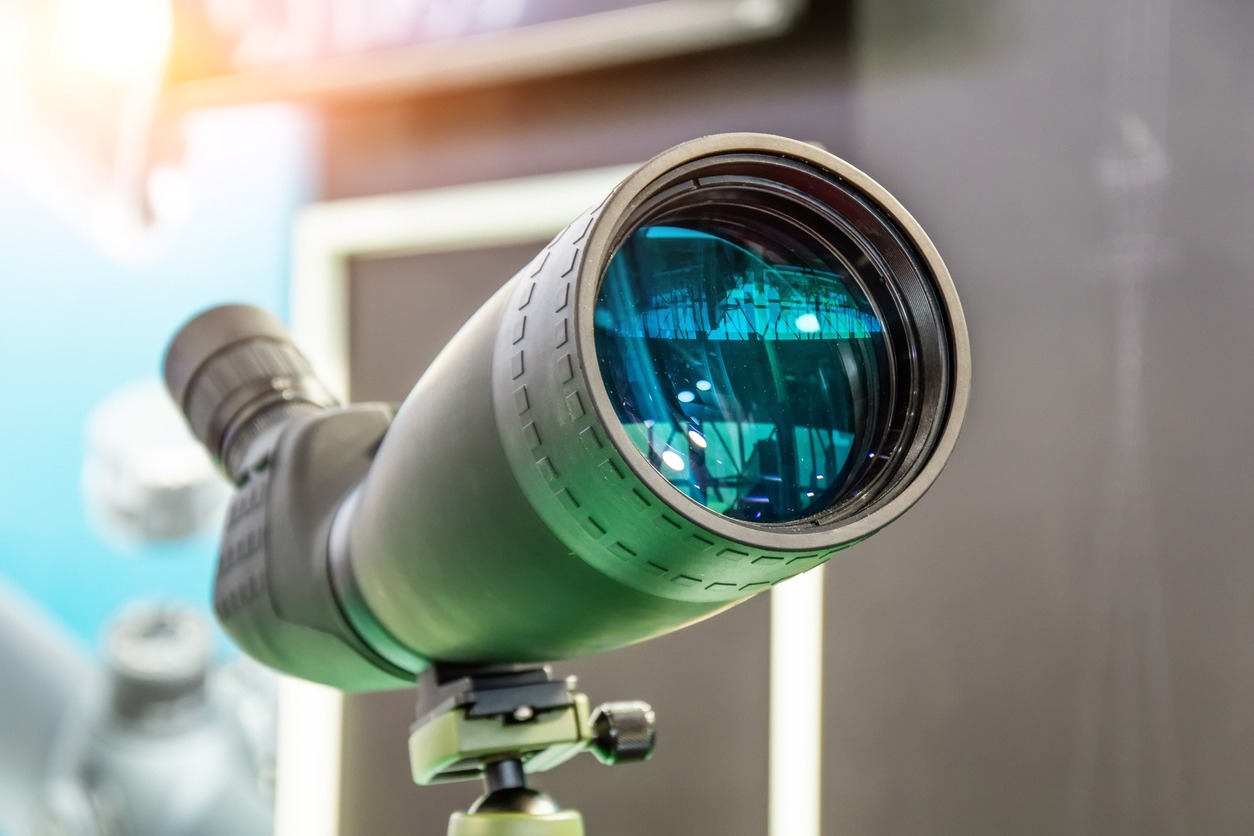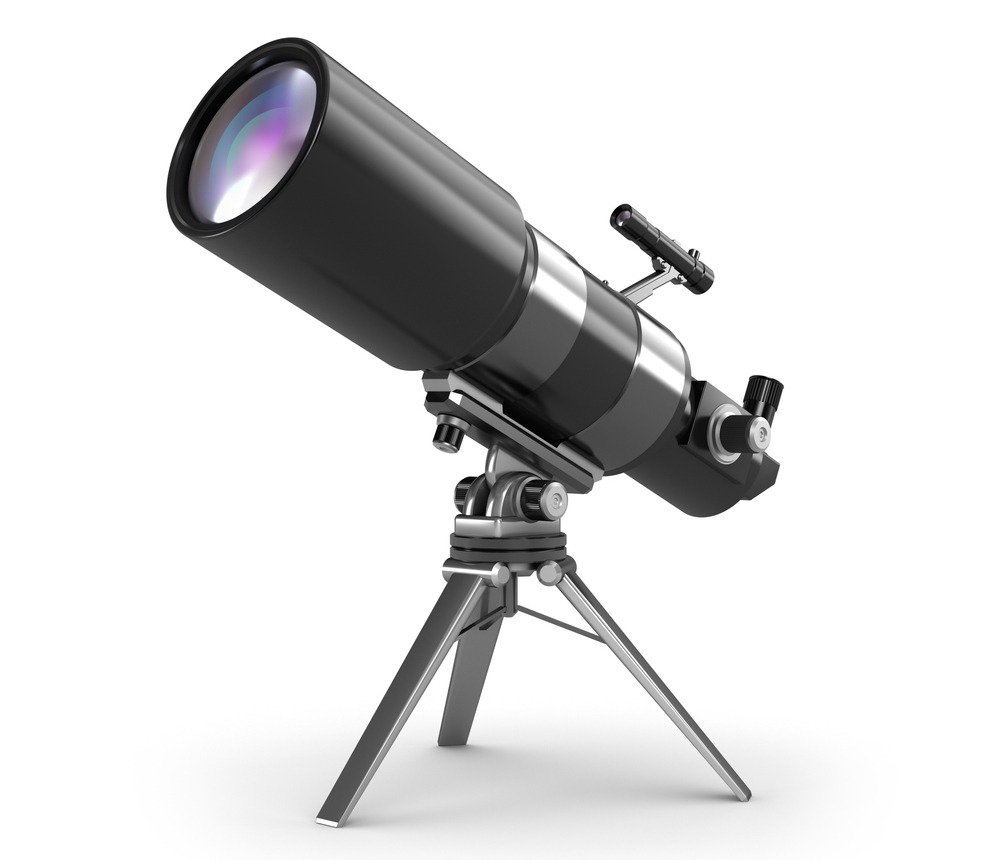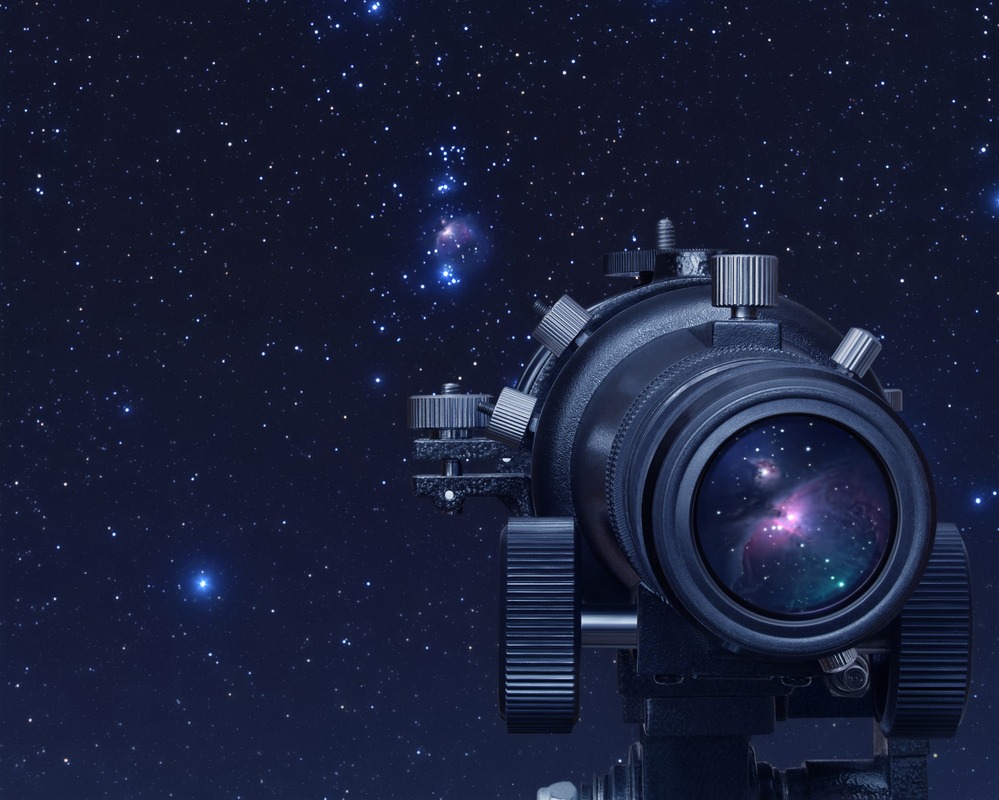Lenses are the key element of a telescope and the kind of lens used in a telescope determines magnification and quality of the image you see through the eyepiece. Therefore, it is essential that you choose the right kind of lens for your telescope based on the object you intend to view. There are various kinds of lenses available for telescopes, but it is vital that you know some basic information to be able to make the right choice of telescope lens.
What Do Telescope Lenses Do?
Telescope lenses are the most crucial part of a telescope as they enable you to see objects that are too far to view clearly with your naked eye. The construction of a telescope includes a pair of lenses or mirrors mounted in a tube. In this construction, the lens at the front aimed at the object you are trying to view is called the objective lens.
The objective lens is responsible for focusing the rays of light coming in. The part where you see the image is called an eyepiece. This lens is responsible for magnifying the image so that you can easily view it.
Typically, light moves in straight lines, but in some instances, when the matter through which light is passing changes, it refracts. Lenses are usually made using glass. Due to their curved surface, the light’s path is bent when light travels through them. This is due to the change in the refractive index of the material it passes through. The degree of refraction depends on where the light hits the lens. All the rays, once bent, will meet at the same focal point. The distance between this focal point and the lens is the focal length.
Telescope Lens vs. Eyepiece
In telescope construction, the two main pieces of optics include a telescope lens or an objective lens and an eyepiece, two distinct parts with different purposes. A telescope lens is the telescope’s primary lens. It is present at the front of a telescope and is responsible for collecting and focusing the incoming light from far-off objects. Telescope lenses are usually constructed using glass or other transparent materials. High-end telescopes can correct chromatic aberration (to some extent) and produce an accurate and sharp image of the object you are trying to look at.
There are many different kinds of telescope lenses available on the market. They come in various sizes, shapes, and types. The lens you will need depends on the object you are looking at and the kind of telescope you are using.
On the other hand, an eyepiece is a lens or collection of lenses that you look through to view the image produced by the telescope lens. They magnify the image of the object you are trying to see so that you can view it more easily. You can find eyepieces in various sizes, shapes, and magnifications depending on what you will be using them for.
If you plan to look at the moon or other planets in the solar system, you will need to purchase a lens with a specific magnification. This will allow you to see the image in much finer detail. Having a set of eyepieces provides flexibility and versatility if you are an astronomer or a hobbyist and use your telescope regularly. Despite different purposes, both of them are equally important in a telescope, as without them, you won’t be able to see the object you are trying to view.
Basic Types of Telescope Lenses
When choosing a telescope lens, it is essential that you know the different types so that you can choose one that fits your needs. The most common types of telescope lenses include refractive lenses, reflective lenses, catadioptric lenses, Barlow lenses, and eyepiece lenses.
Refractive Lenses
Refractive lenses are the primary lenses that are present at the front of the telescope. They are also known as objective lenses and are made using a transparent material, which is usually glass. Such materials allow light from a distant object to refract or bend and focus on a single point.
There are many different kinds of refractive lenses that are used in telescopes. These include spherical, anastigmatic, and aspheric lenses. Spherical lenses are some of the most common refractive lenses used in telescopes because they have a simple construction and are economical to manufacture. Spherical lenses are convex in shape as they refract parallel light rays in a way that they meet at the focal point of the lens.
The only downside to using spherical lenses is that they may cause chromatic aberrations or color fringes. This phenomenon occurs when the light rays passing through a lens focus at different points owing to their varying wavelengths. However, they are still used because they are simple and affordable.
To avoid this issue, you can opt for aspheric lenses, which are non-spherical and thus correct spherical, chromatic aberration that occurs with spherical lenses. An anastigmatic lens is built using three curved mirrors and is designed to correct all three kinds of chromatic aberrations; spherical aberration, coma, and astigmatism.
Reflective Lenses
Reflective lenses are used in reflector telescopes and are also called mirrors. They are typically made using reflective materials such as silver or aluminum coated on top of a glass substrate. With their reflective surface, these lenses can reflect light coming from a distant object and form an image.
Compared to refractive lenses, reflective lenses are cheaper. If you are an amateur astronomer, you may find these appealing due to their cost. They are also easy to maintain and do not degrade over time.
The most commonly used reflective lens or mirror is the parabolic mirror. It has a curved surface that focuses the light on one point. These lenses are perfect for viewing far-away celestial bodies because they are highly efficient at collecting light from the object you wish to view. Using it, you can even view a far-away galaxy or planet.
Spherical mirrors are another kind of reflective lens widely used in smaller telescopes. Suppose you are an amateur and want a lightweight telescope. In that case, you will benefit from purchasing one with spherical mirrors. Due to their design, they are not as efficient at collecting light and may produce a distorted image if not aligned correctly.
Catadioptric Lenses
Catadioptric lenses are constructed using mirrors and lenses and allow you to view a clear and detailed view of the object you are looking at. They combine the features of reflective and refractive lenses and can be flat or curved. You will most likely find such lenses in the Schmidt-Cassegrain telescope, where they are mainly used to reflect light onto a secondary mirror. This mirror focuses the light onto an eyepiece.
Catadioptric lenses are extremely useful in telescopes as they are compact and versatile, meaning you can take these telescopes on your backpacking trips. Additionally, they produce high-quality images, making them an excellent choice, no matter if you are a professional or an amateur astronomer. Another advantage of catadioptric lenses is that they are versatile as they can have a broad and narrow field of view. Therefore, you can use them for both deep-sky and planetary observation.
Barlow Lenses
Barlow lenses are a common piece of telescope accessory as they can increase the eyepiece’s magnification. They are usually placed between the eyepiece and the objective lens or mirror of a telescope to increase the eyepiece’s focal length. This allows you to see the finer details of the object you are trying to view. You can also use Barlow lenses alongside eyepieces of different magnifications to gain access to a wide range of magnifications.
One of the most significant advantages of Barlow lenses is that they are relatively inexpensive. This makes them a cost-effective way to increase the magnification of your telescope without spending money on purchasing multiple eyepieces or investing in a high magnification telescope.
One of the drawbacks of Barlow lenses is that they can cause vignetting. This is a phenomenon where the light at the edges of the lens gets blocked, causing a reduction in the brightness of the object you are trying to view.
Eyepiece Lenses
Eyepiece lenses are present at the viewing end of the telescope from where you look to view the image produced by the lens at the other end. You can find a variety of eyepiece lenses as they come in various sizes, shapes, and magnifications. Common types of eyepiece lenses include Nagler, Plössl, and orthoscopic lenses.
|
Type of Eye-Piece |
Description |
|
Nagler |
Nagler eye-pieces provide an impressive field of view by developing an ultra-wide up to 82-degree field. The design of the eyepiece includes 6 to 7 elements that are coated with special chemicals. These help increase the amount of light that travels through the eyepiece. One downside is that they weigh a lot, so you may need to rebalance your telescope. |
|
Plössl |
A Plössl eye-piece allows you to have a wide 52-degree field of view, which is enough for planetary and deep-sky viewing. The one disadvantage is that it has a short eye relief, which becomes an issue with focal lengths of less than 12mm. Eye relief is how far your eye needs to be from the eye-piece in order to see the entire field of view. |
|
Orthoscopic |
Orthoscopic eyepieces are designed using a four-element optical system that provides you with good eye relief. The field of view of an orthoscopic eye-piece is not as good as that of Plössl eye-pieces, but they are still good all-rounder eyepieces. |
FAQs
1. Are telescope lenses concave or convex?
Reflecting and refracting telescope lenses mostly use convex lenses as they focus the light coming from an object which is far away.
2. What kind of glass is used to construct the glass or lens in telescopes?
To construct lenses for telescopes, optical glass is used. This kind of glass is high-purity with high precision, which is needed for telescopes, microscopes, and cameras.
3. What kind of mirrors are used in reflective telescopes?
In reflecting telescopes, we will mostly find concave mirrors used in place of objective lenses. They help the telescope gather a large amount of light from distant objects to produce a sharp and clear image.
Conclusion
Telescope lenses are the most essential part of a telescope because they allow it to gather light from the distant object you want to see. There are various kinds of telescope lenses available that produce different magnifications and quality of images. When purchasing a telescope lens, it is vital to consider the difference between a telescope lens and an eyepiece and your purpose behind choosing one.



